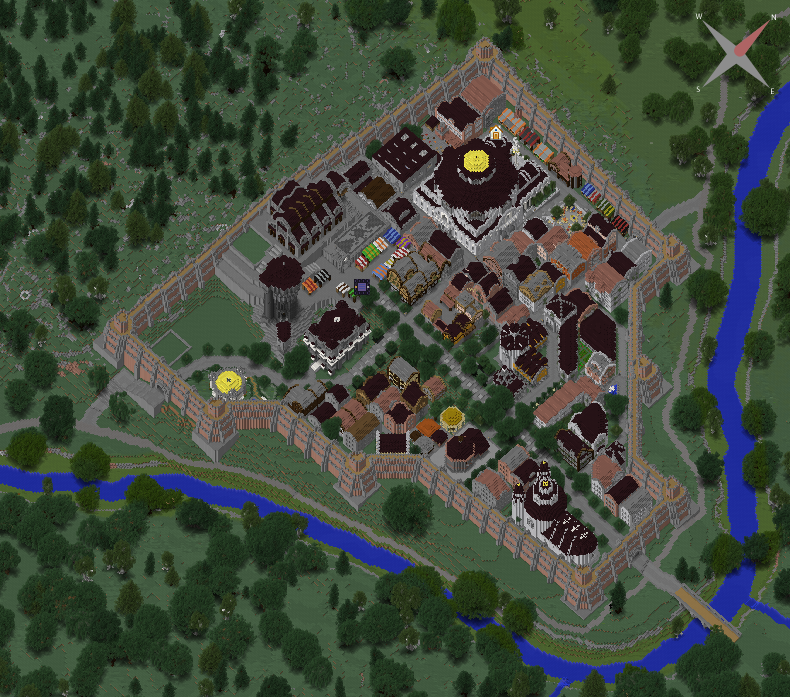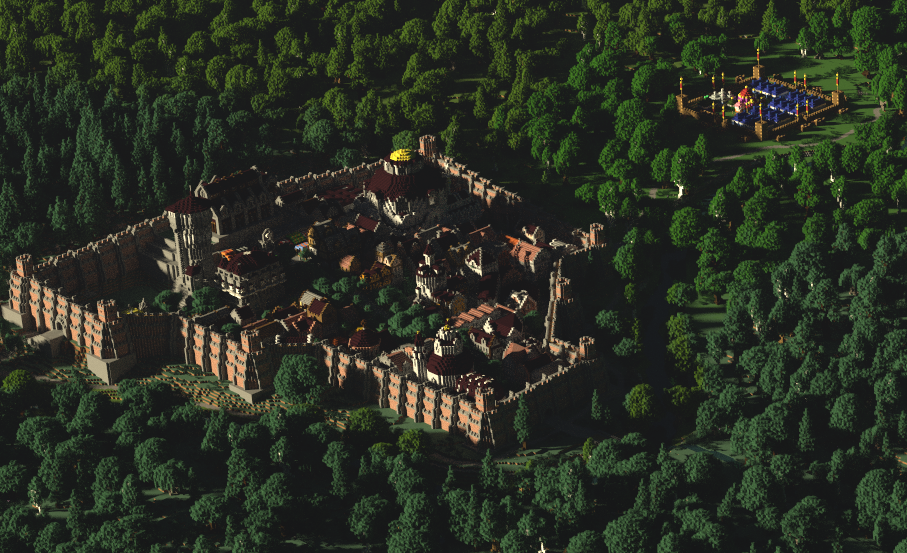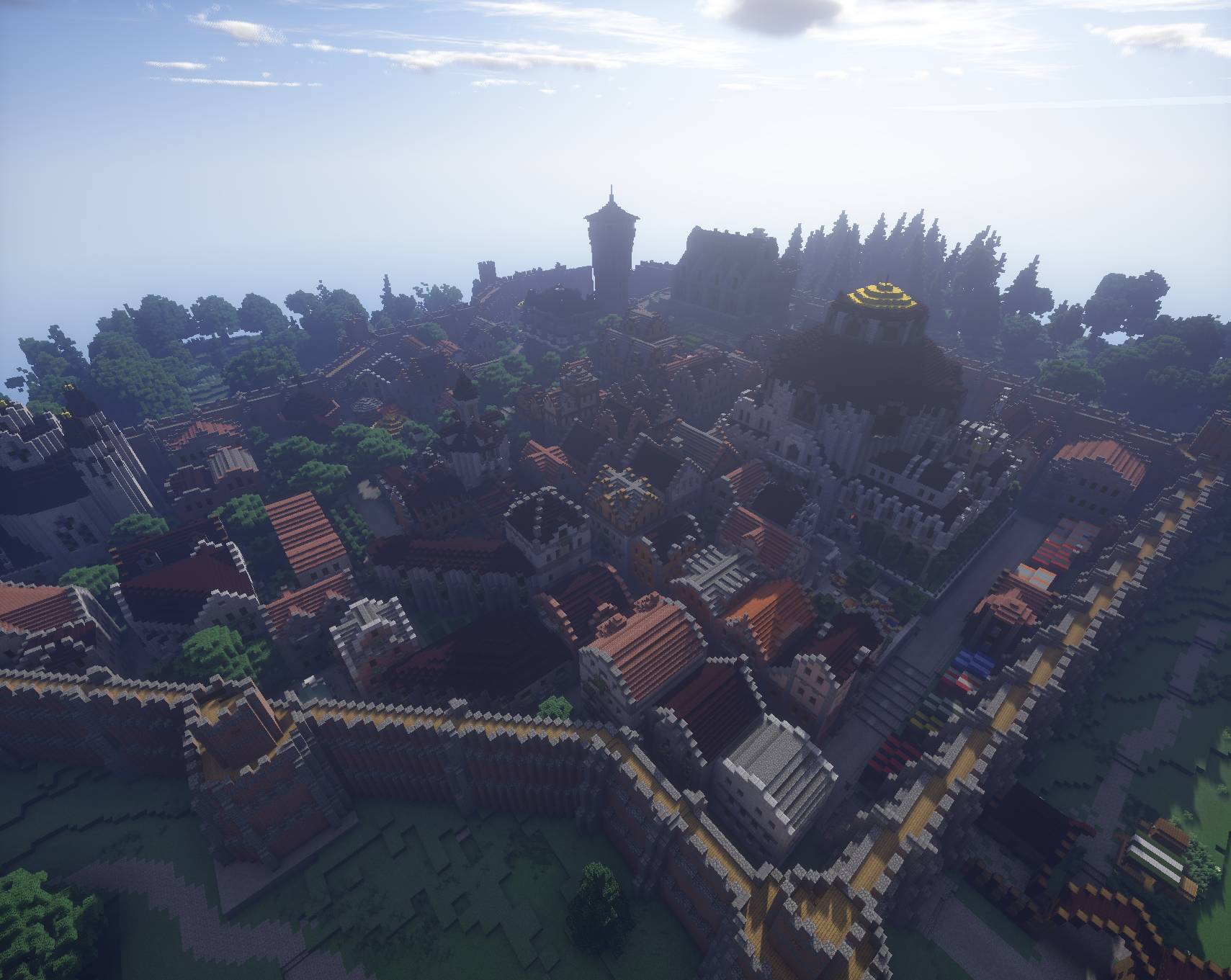Kosel: Difference between revisions
Jump to navigation
Jump to search
No edit summary |
No edit summary |
||
| Line 1: | Line 1: | ||
{{Infobox City | |||
|name = Kosel | |||
|coordinates = http://pluribus.no-ip.org:8123/?worldname=PluribusIII&mapname=surface&zoom=7&x=15229&y=64&z=10975 | |||
|nation = Silvetia | |||
}} | |||
[[File:Kosel.png|thumbnail|right|The city of Kosel]] | [[File:Kosel.png|thumbnail|right|The city of Kosel]] | ||
'''Kosel''' [kosəl] is the largest city and capital of [[Silvetia]]. It is situated on the Western (left) bank of the river [[Schwarzwasser]] in forested, hilly terrain. | '''Kosel''' [kosəl] is the largest city and capital of [[Silvetia]]. It is situated on the Western (left) bank of the river [[Schwarzwasser]] in forested, hilly terrain. | ||
Latest revision as of 09:50, 24 October 2017
| Kosel Kosel on the Dynmap | |
| Nation: | Silvetia |

Kosel [kosəl] is the largest city and capital of Silvetia. It is situated on the Western (left) bank of the river Schwarzwasser in forested, hilly terrain.
Overview
Kosel is defined by two main features: Its thick red city walls and the elevation rise towards the center, with the highest point of the city being the Duke's Hall plateau in the Western city center. The city of Kosel can be entered via three main gates:
- The Northern Gate, called Merchant Gate because of its proximity to the Long Market and the trade fair grounds outside the city
- The Eastern Gate, called Bridge Gate because it leads to the Kosel bridge over the Schwarzwasser river
- The Southern Gate, called Steep Gate because of its elevation; A long flight of stairs connects this gate to the main road leading southwards
The broad and tree-framed Herzogsallee (Duke's Boulevard) leads from the Eastern Gate to the Duke's Hall plateau, steadily rising in elevation while dividing Kosel into a southern part largely dominated by religious buildings and low status housing, and a northern part largely dominated by public services and high status housing.
Sights

- City Walls
- With a height of up to 20 Meters and an average thickness at the base of more than eight Meters, the Kosel city walls are an imposing sight. To reinforce its effect on the enemy's morale, the walls are built of red granite. This earned them the nickname "Rosenhecke" (rose hedge). In its entire history, the city of Kosel has never been taken by force, so the walls stand undefeated.
- Kosel Parliament
- Duke's Hall
- In the days of the Duchy of Silvetia, the Duke's Hall on top of the city's highest plateau was Kosel's dominating feature. It was the seat of the Duke for purposes of representation and courting, housing hundreds of noblemen and their entourages for days at a time.
- Long Fred
- The old tower just south of the Duke's Hall is the tallest building of Kosel. It was the residence of the Duke's family and now serves as a meeting place for the Republic's elite. Once a year it is being opened to the public to celebrate the beginning of Spring by hanging long and richly decorated paper strips out of the top floor's windows. During the Reign of Duke Micha III (The Mad) it was considered a capital offense to call this tower "Long Fred", instead enforcing the use of the offical name "Ducal Tower". With the end of the Duchy the official name is shunned by the natives and using it is an easy way to start a bar brawl.
- Eagle Plaza
- Situated rigth below the Duke's Hall, the Eagle Plaza is the largest open space in all of Kosel without any permanent buildings. It is frequently used for speeches, festivities and other events. It features a giant stone-and-black-marble mosaic depicting the Silvetian Eagle flag, hence its name.
- High Market
- Right below the Eagle Plaza, the High Market is the largest of the three markets of Kosel. It is well known for its exotic goods, which are generally of better quality and much higher price than the ones offered in the Long Market.

- Long Market
- Spanning the entire length of the northern city wall, the Long Market boasts the largest selection of food stalls in all of Silvetia. The food is less expensive here than in the High Market, even if it's not as exotic.
- Occult Market
- Situated in the southern city quarter in between the religious centers of worship, the Occult Market sells a vast variety of goods related to worship, healing, magic, knowledge and general exotic randomness. It is the smallest of the three Kosel markets but by far the most famous one, attracting sightseers, worshippers and eccentrics from all over Hasperia.
- Koseler Handelsmesse (Trade Fair)
- Temple of Pengu
- Although their temple is one of the largest religious buildings in Kosel, the Pengu community is by far the smallest of them all. According to the Pengu priests, the Kosel temple is among the smallest of their houses of worship. A monument not only to the greatness of Lord Pengu, but more so to the megalomania of its clergy.
- St. Anna Minster
- The largest Sotiran church in Silvetia, the Minster is the seat of the head of the Silvetian branch of the Sotiran faith. All religious ceremonies for the general populace of Kosel are held or at least started here.
- Mikkelskirche
- The Balthasarian church was the first religious building in Kosel, erected during the reign of Bishop Balthasar IIII. of Greifenhausen. There is a strong Balthasarian community in Kosel, constituting the second largest religious group in the city after the Sotiran church.
- Temple to Azura
- Koseler Rathaus (Townhall)
- Civil War Monument
- Public Baths
- Koseler Schilderturm (Sign Tower)
- Located at Parliament street corner Townhall Street, this tall stack of signs is reminding the populace that it is forbidden to plant signs in that specific place. The construction originated as a prank by the local youth on the Kosel municipal government, but quickly became an attraction on its own right and today it is a treasured little oddity in the heart of the city.
- Botanist's Alley
- A winding path between the High Market and the Town Hall, along which botanic rarities have been planted and can now be enjoyed by the general public. Uprooting, damaging, stealing or otherwise harming the plants is not only a criminal act, but also considered an aggression towards the citizens of Kosel and has led to lynch mobs on several occasions in the past. Travellers are strongly advised to refrain from any such act!
- Count Hohenstein Plaza
- Small, expensive marble fountain just inside the Eastern city walls. Dedicated to Count von Hohenstein, the aristocratic army commander who fought in the Silvetian Revolution on the side of the Republicans against the Lonian League and the Mad Duke.
- Koseler Freiheit
- Hotel, restaurant and bar in front of the eastern entrance of the Parliament building.
- The White House
- An establishment run by the Sisters of the Night. Men (and sometimes women) of all classes spend the night (or however long they can afford) with recreational activities. While alcohol is served here, there is a strict code of conduct and the city guards are not known for mercy enforcing it. Being banned from the White House is considered a great shame among the higher society.